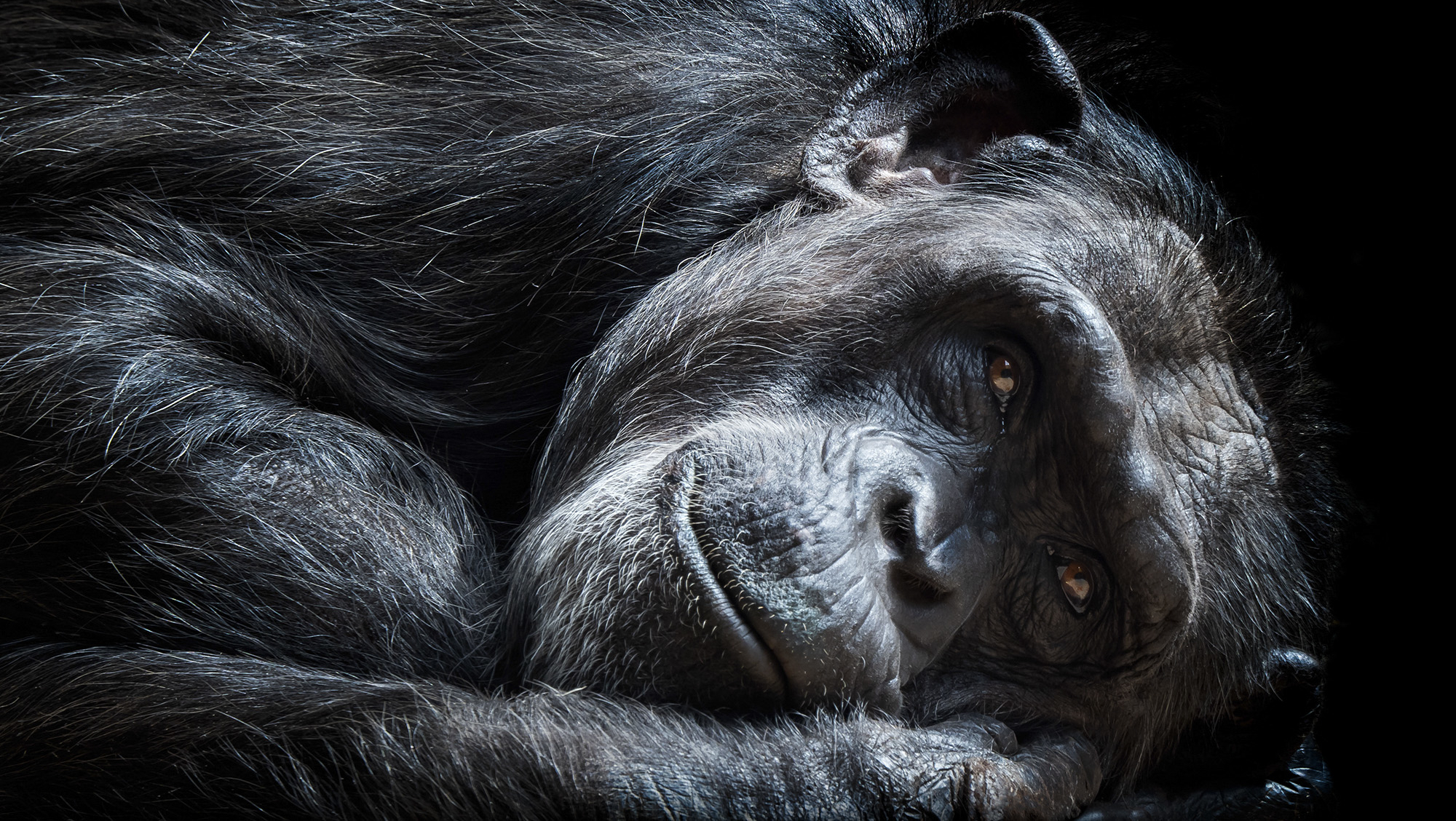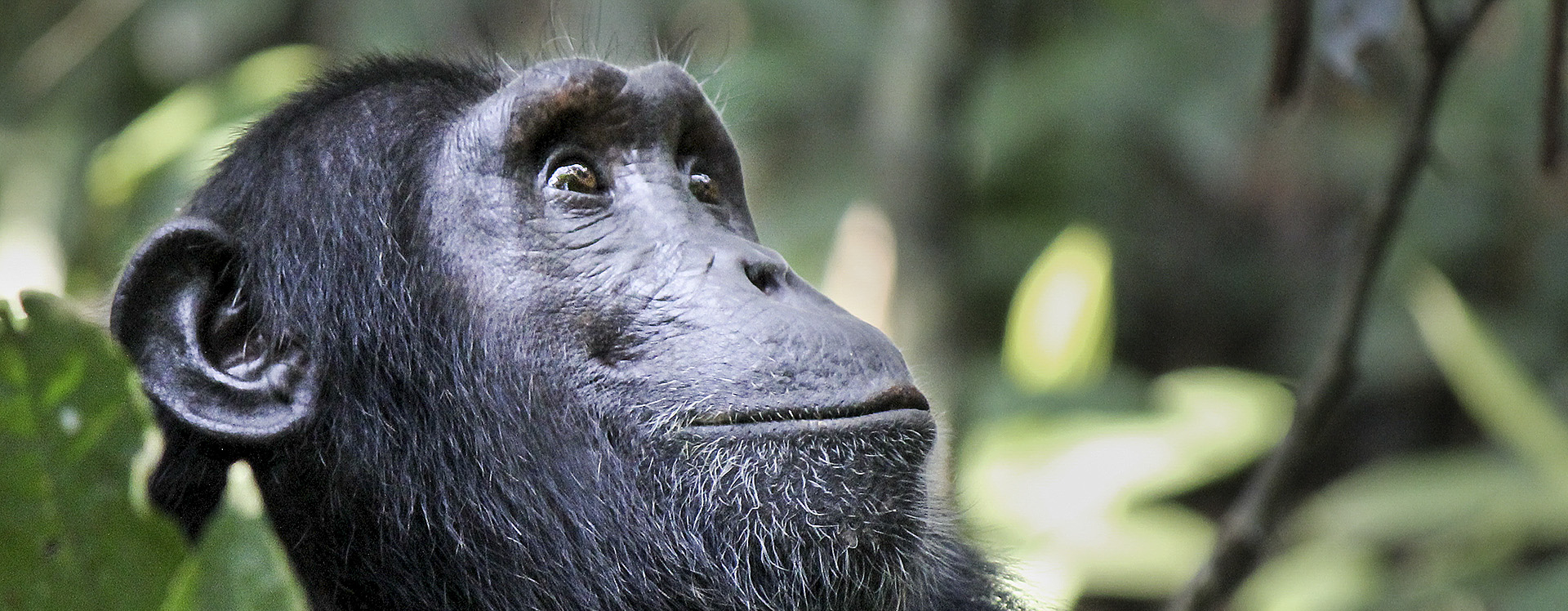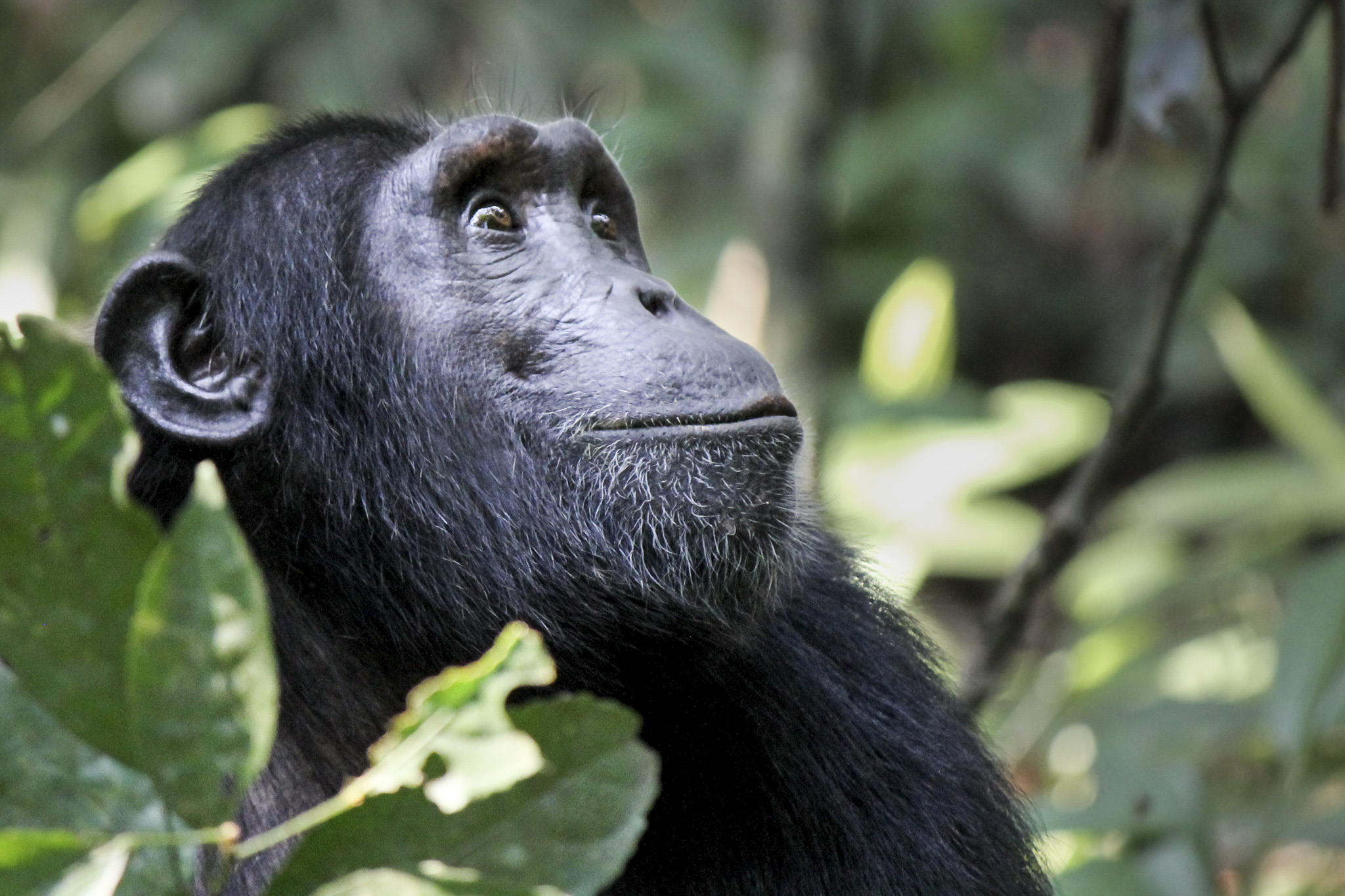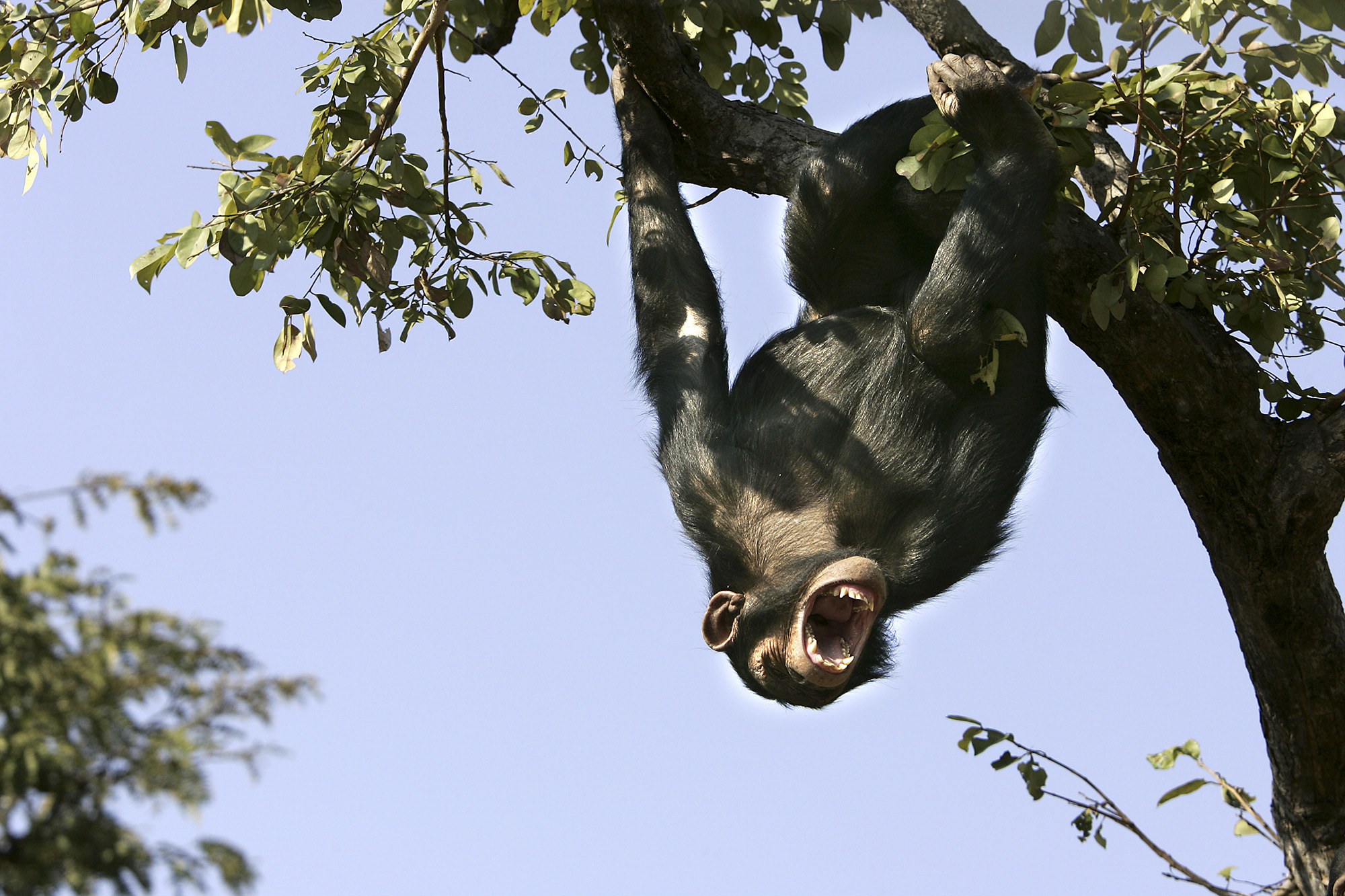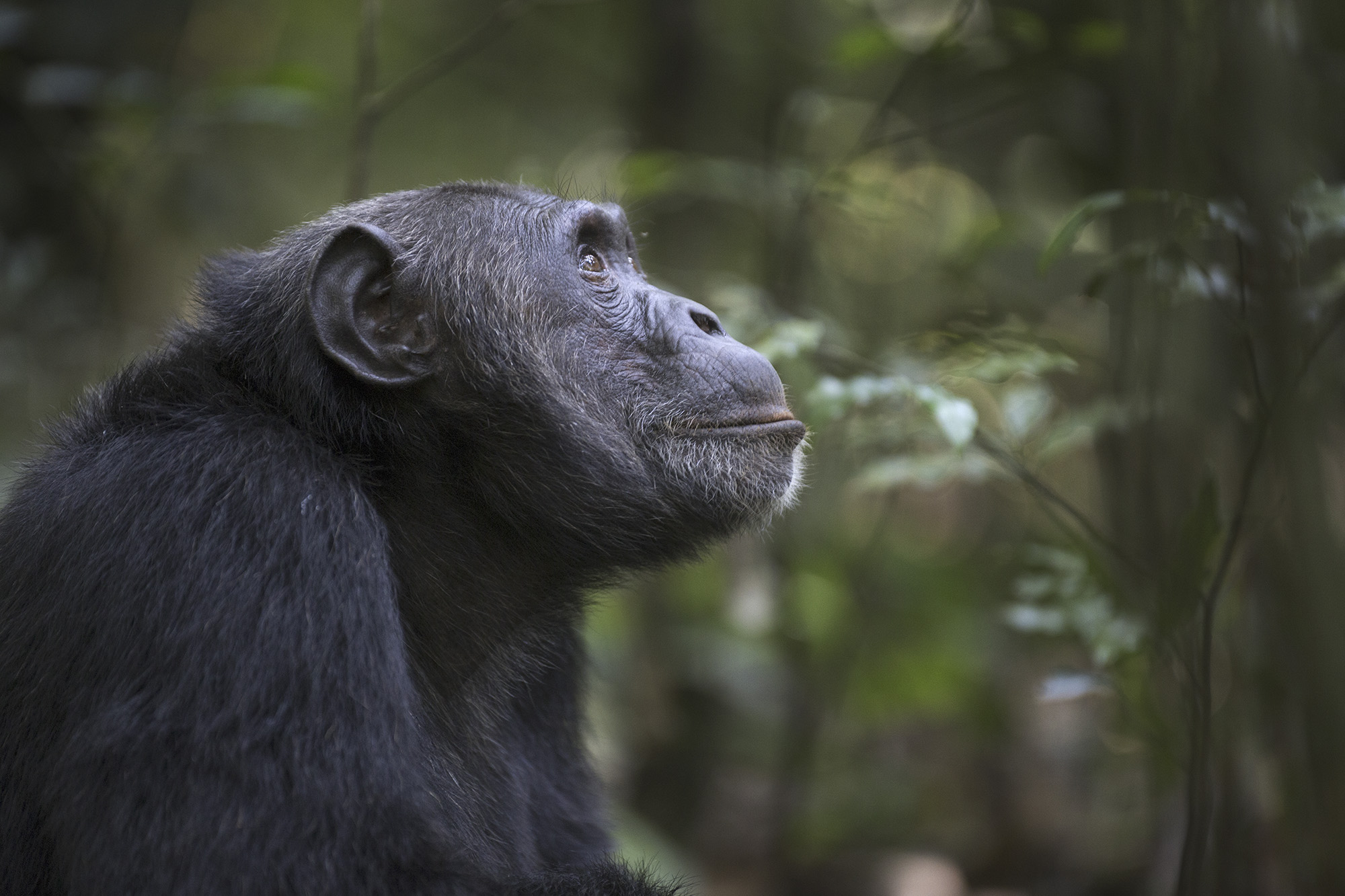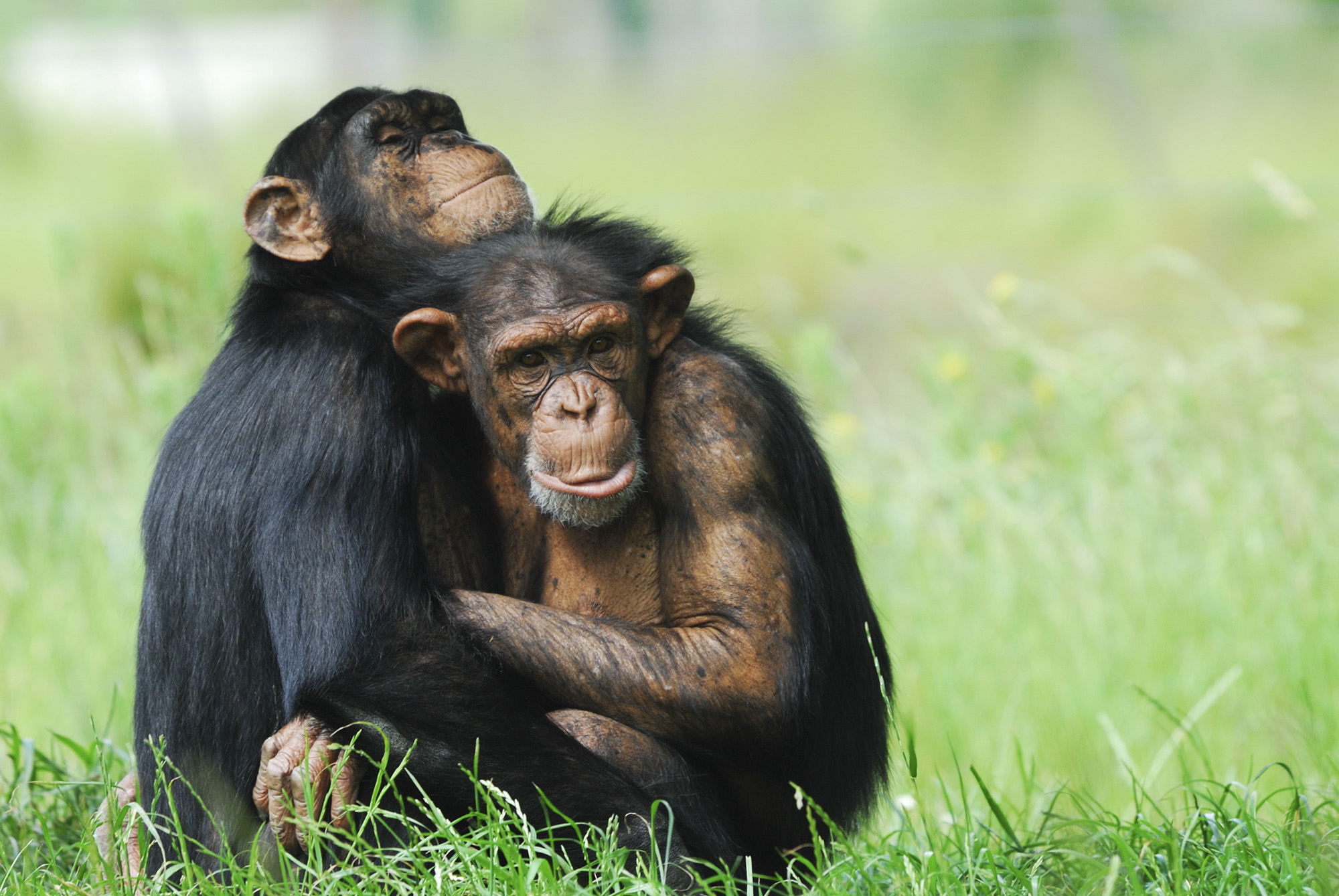Chimpanzee
(Pan troglodytes)

Guinean Moist Forests
STATISTICS
Height up to
167.6 cm
Weight up to
58.9 kg
Lifespan
51 years
Great Ape - Intelligent - Social - Complex Communication - Tool Use
One of our closest living relatives, the Chimpanzee is estimated to share 98 percent of its genes with humans. An intelligent and social species, the ‘Chimp’ has complex expression and communication systems using sounds, expressions, and postures. It also uses grooming as a form of bonding. The Chimp lives in stable communities of up to 150 individuals, predominantly in moist and dry forests and forest galleries extending into savanna woodlands.
Characterized by enlarged eyebrows and protruding lips, the Chimp has black fur with lighter bare skin on its face, hands, ears, and palms. Its arms are longer than its legs so it uses its knuckles to walk on the ground, although it can stand and walk upright. Its opposable thumbs and long fingers are used to move through the trees. The Chimp is remarkably dextrous and one of the few species to exhibit tool use.
The Chimp mostly eats fruit and plants but it also consumes insects, eggs, and meat. It is the primary predator of the Red Colobus Monkey. As such, it plays two important roles in this ecosystem: a key player in the seed dispersal of certain tree species, and a control on the population of the Red Colobus Monkey and other smaller mammals. The Chimp hunts in packs and is competitive with other primate species, which may affect their populations. The species has also been known, remarkably, to self-medicate using plants.
BIODIVERSITY BENEFIT
Seed Disperser, Population Controller
THREATS
Habitat Destruction
Large scale logging and human encroachment.
Hunting
Subsistence hunting as a source of meat.
Disease
Increased contact with humans has brought diseases which can be lethal to chimps.

200,000
Left in the Wild
PROTECT THE WILDARK 100
